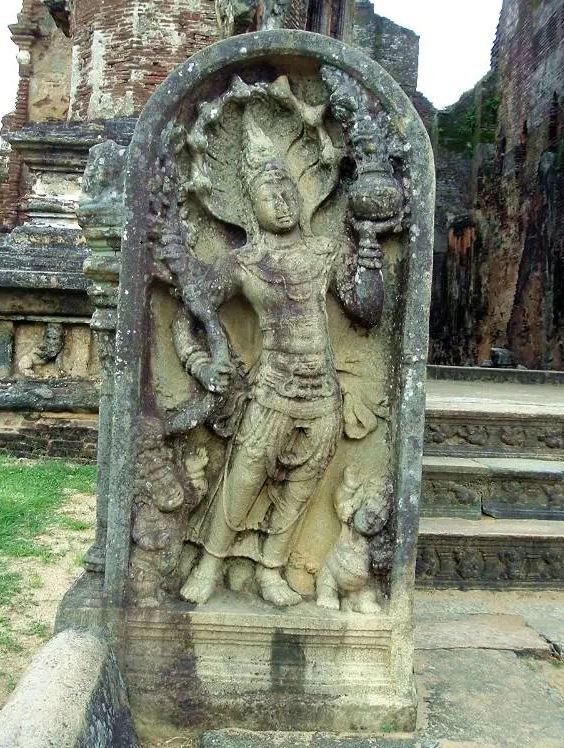Lankathilka Polonnaruwa
King Prakramabahu built the monolithic Lankathilaka Image House in Polonnaruwa, Sri Lanka, which lies south of Kiri Vehera and contains an image of the Buddha. The entire structure is made of brick, and the exterior walls are embellished with ostentatious themes and objects. Another clay brick structure that measures 41 feet tall is the statue of the Lord Buddha. Sadly, today’s monument has been entirely demolished above the shoulders, despite the fact that the bricks used were created specifically for the statue’s construction.
Two enormous brick pillars that are likewise built of brick flank the entrance to the Lankathilaka picture house. The highest pillar is currently 56 feet tall, although it’s thought that these pillars were formerly significantly taller. According to the chronicles, the structure had five floors and was a component of the Alahana Pirivena.

Stupa House
Inside the Lankathilaka stupa house, the two staircases leading to the top stories have a distinctive layout. Each step is about one foot tall and just about four inches wide. The stairways begin at the end nearest the Buddha Statue and ascend to the end closest to the entryway. The usage of this unusual design makes it impossible for the user to use the stairs in the manner we are used to. With your back to the walls, sideways movement is the only viable technique to ascend these stairs.
This stupa house is a wonderful illustration of a Gedi-Ge type structure. The roofs of these vault-style structures, which are largely constructed out of bricks and are either shaped like an arch or a semi-sphere, are their distinctive characteristic. Unfortunately, this building’s roof was long ago destroyed.

The climber will never turn his back on the Buddha when ascending to the upper stories, which is considered disrespectful, which is why the stairs were built so they could only be used sideways.
Unknown to many, the Lankathilaka Image home is distinctive in another way. The only place in the nation where a Nagini image may be found in a balustrade is this image house.
The Entrance
A moonstone, two guard stones, and two balustrades on either side of the steps typically adorn the entryway of all ancient Buddhist temples. Typically, the guard stones show a picture of a Naga with seven hoods. You hardly ever see the Nagini, the feminine form of the Naga, on a guardstone or anyplace else. As you enter the temple, the Nagini carving is on the inside side of the left balustrade. Her head is framed by the same number of hoods as the naga on the opposite side, showing that the naga and nagini were both regarded as having a same amount of significance in terms of function in their capacity as guardians.

